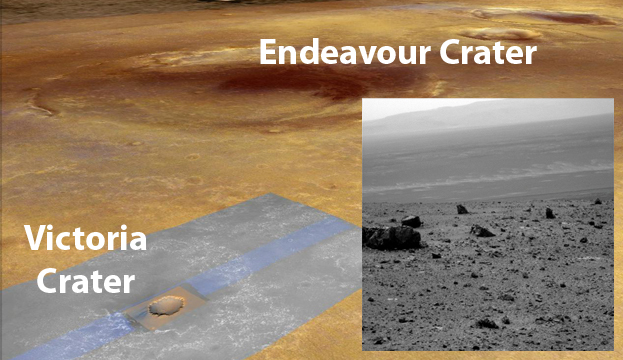
Who’d’ve thought back in 2004, when NASA’s twin Mars rovers Spirit and Opportunity set wheels on Martia-firma, that one would still be roving nearly eight years later?
Who would have imagined three years ago, when the already veteran Opportunity set forth from its two-year prospecting site at Victoria Crater on a long march to the much larger Endeavour Crater, that the Fates would actually NOT stop this Energizer-Bunny dead in its tracks?
Okay, enough jaw-dropping incredulity. Some things CAN be built to last….
About three weeks ago, Opportunity reached the rim of the 14-mile wide Endeavour Crater, after clocking nearly 21 miles since its landing seven and a half years ago. By Earth-rover standards, that’s about one round trip to work and home again for me, and about 25 minutes of my time—but Opportunity’s commute is a far greater feat, alone on another world, long minutes away even by radio waves, no service garages for maintenance, no fuel stations other than the daily dose of energy doled out by the Sun.
One of the first things Opportunity did upon reaching the rim of the giant crater, after taking some pictures to give us the lay of the land, was to examine some rocks. After all, more than anything else, the Mars Exploration Rovers are geologists, or rock hounds, sent to tell us about the Martian environment, today and in the past, through the chemical makeup and stratigraphy of the rocks and soil.
